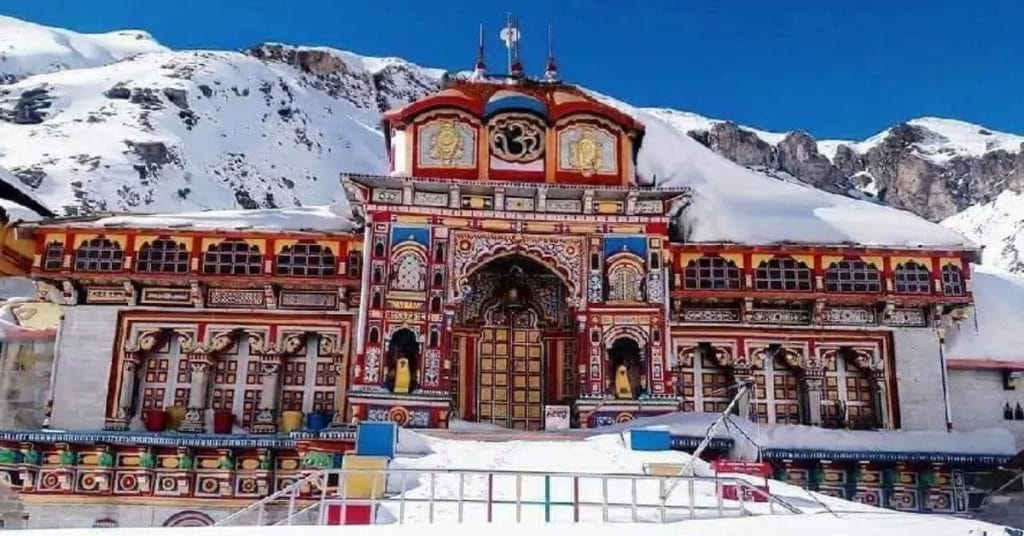Discover the deep Cultural Significance of Do Dham Yatra in Hinduism, exploring its sacred routes to Kedarnath and Badrinath, ancient traditions, and why millions of devotees embark on this divine pilgrimage every year.
The Do Dham Yatra, which includes a pilgrimage to Kedarnath and Badrinath, is not just a spiritual journey—it is a profound cultural experience rooted in ancient Hindu traditions. These sacred sites, nestled in the Himalayas, are more than just places of worship; they represent centuries of devotion, mythology, and spiritual awakening.
In this article, we explore the deep cultural significance of the Do Dham Yatra in Hinduism and how it continues to shape the faith of millions.

Cultural Significance of Do Dham Yatra in Hinduism
What is the Do Dham Yatra?
The Do Dham Yatra refers to the pilgrimage to Kedarnath (dedicated to Lord Shiva) and Badrinath (dedicated to Lord Vishnu). It is a part of the larger Char Dham Yatra, which also includes Gangotri and Yamunotri Cultural Significance of Do Dham Yatra in Hinduism.
While Char Dham is considered the complete spiritual circuit, many pilgrims opt for the Do Dham Yatra as a shorter yet equally impactful spiritual journey Cultural Significance of Do Dham Yatra in Hinduism.
Kedarnath: The Abode of Shiva
- Mythological Roots: Kedarnath is one of the twelve Jyotirlingas of Lord Shiva and is deeply tied to the Mahabharata. It is believed the Pandavas came here seeking Shiva’s forgiveness after the Kurukshetra war.
- Cultural Importance: The temple, believed to have been established by Adi Shankaracharya, represents the renunciation and destruction of ego—a key teaching in Shaivism.
Kedarnath Symbolism:
- Spiritual Atonement
- Union with Nature and Divine Power
- Renunciation and Inner Purification
Badrinath: The Sacred Seat of Vishnu
- Mythological Roots: Badrinath is considered the dwelling of Lord Vishnu in meditation. According to legends, Goddess Lakshmi stood as a Badri (berry tree) to protect him from harsh weather.
- Cultural Importance: It is a prominent center of Vaishnavism and is one of the 108 Divya Desams (sacred Vishnu temples).
Badrinath Symbolism:
- Compassion and Protection
- Path of Devotion (Bhakti Yoga)
- Balance between worldly duties and spiritual life
Spiritual Unity in Diversity
The Do Dham Yatra is unique as it brings together two powerful deities from two major sects of Hinduism—Shaivism (Shiva worship) and Vaishnavism (Vishnu worship). It symbolizes the unity of various paths to the same truth, promoting:
- Harmony between different sects
- A broader spiritual vision
- Interconnectedness of all divine forms
Role in Hindu Traditions and Rituals
The Do Dham Yatra is considered highly meritorious and is often undertaken:
- As a once-in-a-lifetime pilgrimage
- For ancestral blessings and moksha (liberation)
- As a spiritual detox from material life
It also plays a major role in Puranic literature, temple traditions, and Hindu festivals, especially during Akshaya Tritiya, Shravan Maas, and Ekadashi.
Cultural Influence Through Generations
- Oral storytelling traditions around these Dhams continue to pass on myths and morals.
- Many classical songs, bhajans, and poetic works reference the spiritual aura of Kedarnath and Badrinath.
- The temples serve as architectural and artistic heritage of ancient India.
- These sites promote eco-spiritual values, encouraging respect for nature and the Himalayas.
Modern-Day Relevance
Despite the rise of modernity, the Do Dham Yatra remains deeply embedded in Indian culture:
- Pilgrims from all walks of life take this journey, bridging generations.
- The Yatra ecosystem supports local communities, preserving mountain culture and language.
- It inspires global interest in India’s spiritual heritage, attracting international visitors and researchers.
Conclusion
The Do Dham Yatra is far more than a travel itinerary—it’s a cultural legacy that continues to inspire devotion, humility, and unity. Whether you’re seeking spiritual enlightenment, cultural insight, or personal transformation, this sacred journey offers a deep connection with Hinduism’s timeless values.
FAQs About Do Dham Yatra and Its Cultural Significance
Q1. Is Do Dham Yatra only for religious people?
No. While deeply spiritual, the Yatra also offers cultural, historical, and natural value for all travelers.
Q2. Why are Shivaand Vishnu both part of the Yatra?
It represents the balance between destruction (Shiva) and preservation (Vishnu), essential forces in Hindu cosmology.
Q3. Can foreigners participate in the Yatra?
Yes, many international tourists and spiritual seekers undertake the Do Dham Yatra to explore Indian spirituality and culture.
Q4. What language is commonly used during the Yatra?
Hindi is widely spoken, though many locals understand basic English, especially in tourist areas.
Q5. What makes the Yatra culturally significant today?
It connects people to thousands of years of tradition, mythology, and philosophy—preserved through temples, rituals, and pilgrim communities.





